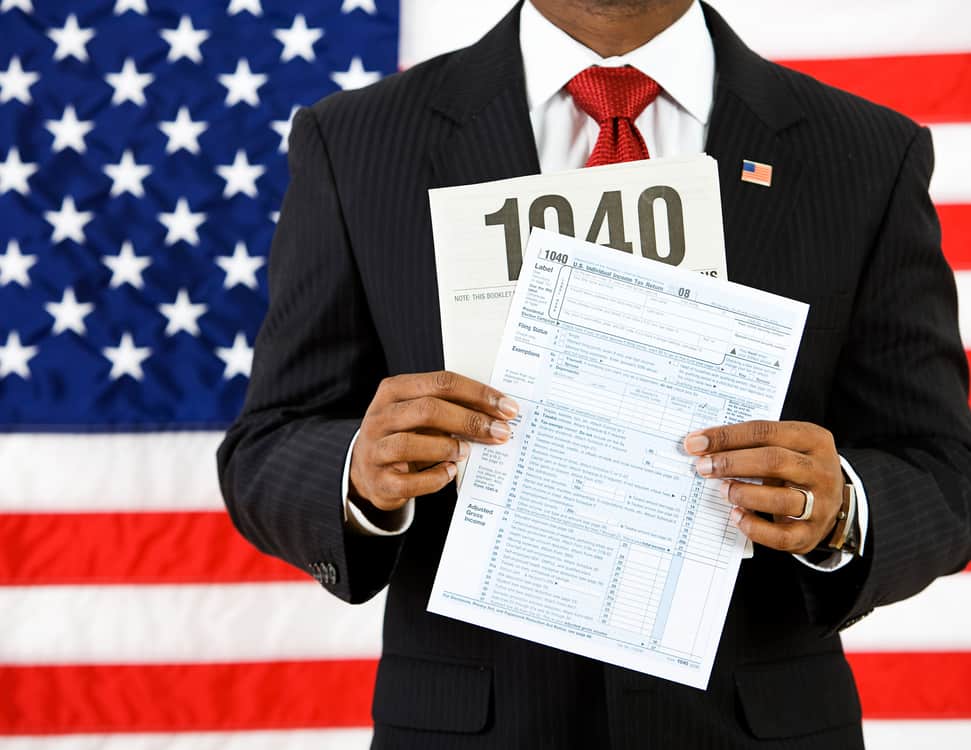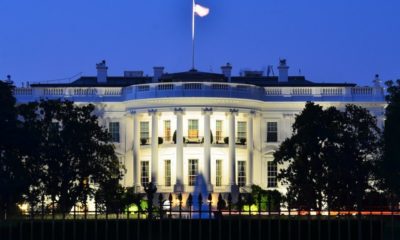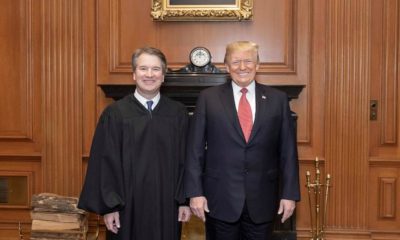Government
Trump Tax Cut an Ode to the Laffer Curve

The unsung hero of the GOP Christmas gift of a tax cut is Arthur Laffer — the Reagan economist who helped devise the Gipper's tax reductions. Those tax cuts rebuilt the U.S. economy in the 1980s and pulled us out of the mini-depression of high inflation and unemployment in the late 1970s.
Some 30 years later, Laffer has struck again. House Speaker Paul Ryan tells me that there “were very few economists who had a bigger impact on this tax bill than Laffer. Believe, me our (Republican) members listen to him.” Rep. Mark Meadows, the chairman of the Freedom Caucus, adds, “Laffer is one of our go-to guys on understanding the economy.”
And why not? Laffer is the economist who over the last several decades has taught presidents, foreign leaders, governors and senators how taxes weigh on the economy. Just about 40 years ago he had a famous dinner in Washington with then-top White House advisers, Dick Cheney and Don Rumsfeld, and drew them the famous chart on the cloth hotel napkin. The “Laffer Curve” teaches us that when tax rates get too high, they smother investment, saving, work and entrepreneurship.
Prior to Laffer, most of the influential economists believed, wrongly, that growth is influenced by Keynesian “demand-side” forces, such as consumer spending and government outlays. But of course, it doesn't matter how much demand there is for something: If the taxes are too high to turn a profit, no one will produce it. And people can't buy things until they have a job to earn income. A poor nation such as India, which has a population of over 1 billion, has plenty of demand — but they can't produce things.
No products found.
Most Americans came to understand the real-life wisdom of the Laffer theories when Ronald Reagan slashed tax rates from 70 percent to 28 percent in the 1980s and federal revenues nearly doubled. The economy experienced one of the greatest growth spurts in American history from 1983 to 1990.
Economist Larry Lindsey has documented from IRS data that after those tax cuts, IRS collections from the rich surged, even with lower tax rates.
[wps_products_gallery product_id=”4335616426035, 4333970718771, 4345885818931″]
Donald Trump wants to be the next Reagan, and his tax cut is much in that fashion. Back in the 1980s the problem was individual rates, which were as high as 70 percent. Now the bigger problem is business tax rates, which reach as high as 40 percent (including state and local) in the U.S., compared with about 20 to 25 percent in the rest of the world. This has caused capital, businesses, jobs and factories to flee the United States. The new 21 percent tax rate under Trump reverses that anti-America incentive. Laffer believes the lower corporate tax rate will bring so much new business to the United States that the policy will pay for itself over a decade.
Liberals sneer that Laffer's “supply-side economics” is merely an excuse for easing the tax burden on the super-rich and driving up the budget deficit. But Trump is a clear disciple of the Laffer curve. Growth comes from easing the weights on business — and that comes with lowering the highest tax rates. It's no accident that Trump and his economics council has had Laffer over to the White House on multiple occasions.
Laffer has often stated that one big mistake Reagan made at the start of his administration was to phase-in his income tax cut to early 1983. This helped stall out the economy in Reagan's first two years in office, and it wasn't until the full cut was implemented that the economy shot out of a cannon like a rocket. He warned members of Congress in recent weeks not to delay the corporate tax cut by a year, as the Senate bill originally proposed. The one-year delay was canceled, and American companies will get the tax cut on Jan. 1, 2018. “That was Laffer's influence,” House Speaker Ryan said with a smile. Thank you, Arthur Laffer.
One profound disappointment is that no modern Democrat seems to understand the Laffer Curve or the effects of incentives on economic behavior. That wasn't always the case. John F. Kennedy believed in the power of lower tax rates and called for 30 percent tax cuts. When Jerry Brown, now governor of California, ran for the Democratic nomination for president, he ran on the idea of a 16 percent flat tax. Who devised it? Arthur Laffer. Now leading Democrats, such as Bernie Sanders and Elizabeth Warren, want to raise tax rates, not lower them.
No products found.
But for now at least, it is once again the Laffer theories that are triumphant and being put to the test. If these policies work anywhere near as well for Trump as they did for Ronald Reagan, the American economy is in for one helluva ride in 2018 and beyond.
Stephen Moore is a senior fellow in economics at the Heritage Foundation. His latest book is “Fueling Freedom: Exposing the Mad War on Energy.” He served as an economic adviser to the Trump campaign. To find out more about Stephen Moore and read features by other Creators Syndicate writers and cartoonists, visit the Creators Syndicate webpage at www.creators.com.
COPYRIGHT 2017 CREATORS.COM












